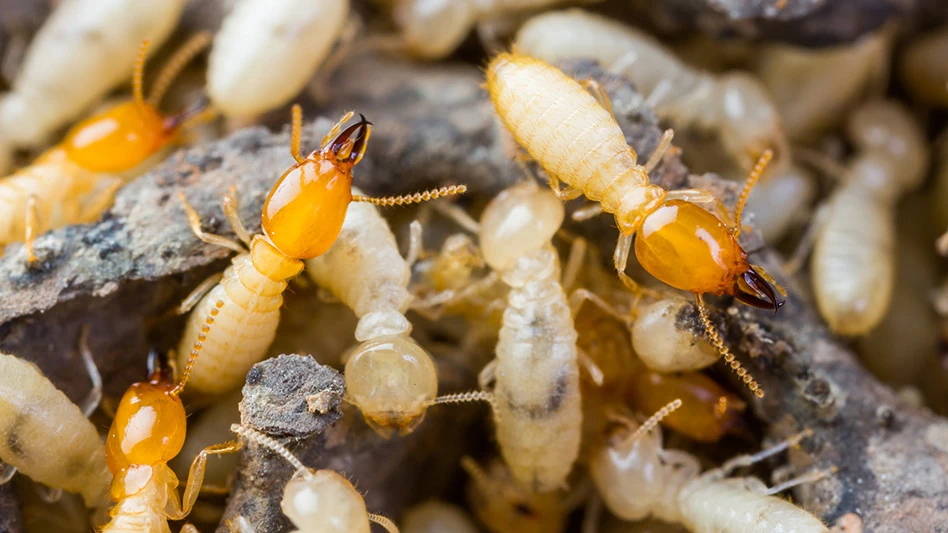
Smauy | iStock
PMPs who perform termite work often complain about decreased termite swarming. A good swarming season is critical in termite work because it is the major hot sales lead for most termite control companies. More than 70 percent of companies measure the success of their termite season by the number of calls they get during the swarming season.
Incidence of swarming of the eastern subterranean termite varies significantly from year to year. Experts give many possible reasons for reductions in swarming. Some see it as an indicator of reduced termite numbers overall. Others say that the reduced swarming doesn’t seem to mean an actual decrease in the number of termites or colony size.
Optimists say it points to improved termite control in homes. Some experts see the reduced swarming of termites as not related to the number of termites or infestations but simply as reflective of an independent factor, such as climate change, that has caused termites to swarm less often.
Whatever the reasons, it is clear that eastern subterranean termite swarms are not what they used to be. Western subterranean termites and Formosan subterranean termites have not exhibited a similar long-term reduction in swarms, at least to date. But all termites occasionally will have a low swarm season in some region of the country at some time. There are a number of possible reasons for this, including:
- Non-repellent termiticides. The highly effective non-repellent termiticides not only reduce retreats but also may have dropped overall termite numbers in the areas where they have been used by destroying all colonies around treated surfaces.
- Baits. The same argument as for non-repellent termiticides.
- Perimeter treatments. Non-repellent termiticides also are increasingly used for perimeter treatments for general pests and this use pattern also may be impacting termite populations around treated structures.
- Natural population cycles. Animal populations tend to be cyclic and termites are likely no exception. Reduced swarms may only be a temporary condition reflecting a natural low point in termite numbers.
- Weather. Other experts suspect that the unusual weather during the past few years — flooding and drought — has depressed termites’ triggers for swarming.
- Improved termite control. Improved technology for control and inspections, better training and tougher regulations have improved control to the extent that both retreats and swarms are down significantly in previously treated homes.
Some pest management professionals and some researchers report seeing swarmers in termite monitors on a regular basis during swarming season. In spite of that, many of these populations never swarmed that year. The swarmers either die off or are cannibalized by their own nest mates.
When swarming does not occur in an area, records indicate that soil moisture, temperature and wind were never “right” on the same day for swarming. With apparent climate changes over the past few years, weather alone may be the major factor influencing poor swarming seasons.
No matter the reason, eastern subterranean termites are not making themselves as apparent to homeowners, which means homeowners are not calling pest control companies as often. When there’s a poor swarming season, pest control companies need to be more aggressive in generating leads and inspections in order to compensate for the weak swarming season.
Successful termite companies need to modify their marketing strategies during these times to include marketing preventive termite treatments to new and existing customers, aggressive marketing for annual inspections, or providing low-cost termite monitoring programs, or including termite monitoring as part of general pest control contract service to pick up termite jobs when the monitors are hit. The bottom line is that companies need to be more aggressive when the termites aren’t!
The authors are well-known industry consultants and owners of Pinto & Associates. This article was adapted from The Business of Termite Control: How to Profit in Today’s Changing Market by Larry Pinto and Doug Mampe. To place your order, visit www.techletter.com.
Latest from Pest Control Technology
- Donny Oswalt Shares What Makes Termites a 'Tricky' Pest
- Study Finds Fecal Tests Can Reveal Active Termite Infestations
- Peachtree Pest Control Partners with Local Nonprofits to Fight Food Insecurity
- Allergy Technologies, PHA Expand ATAHC Complete Program to Protect 8,500 Homes
- Housecall Pro Hosts '25 Winter Summit Featuring Mike Rowe
- Advanced Education
- Spotted Lanternflies, BMSBs Most Problematic Invasive Pests, Poll Finds
- Ecolab Acquires Guardian Pest Solutions





